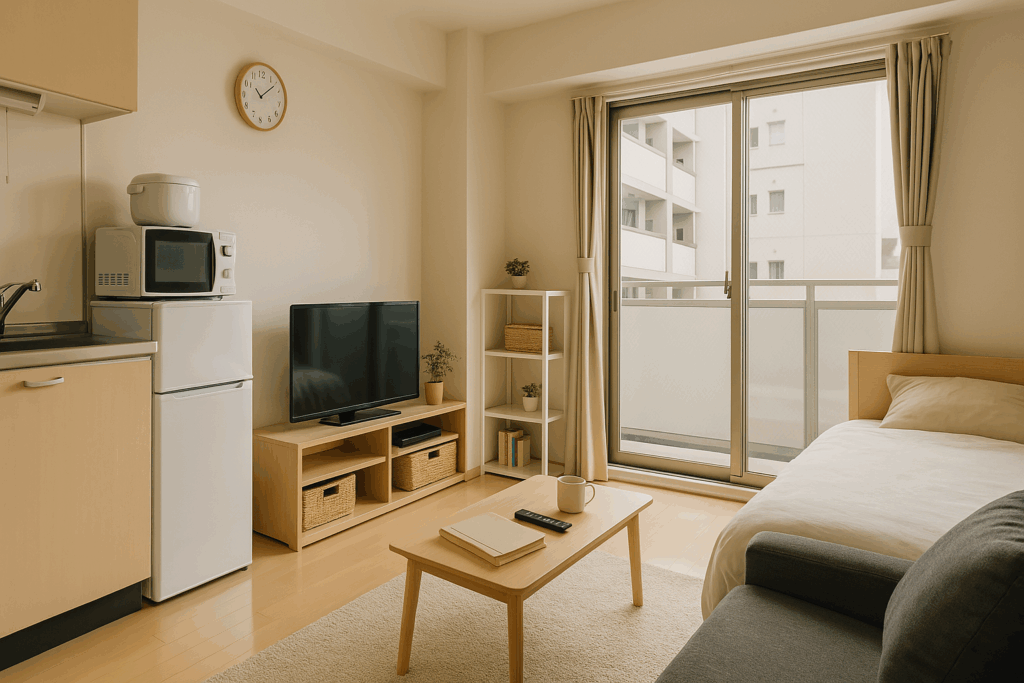When global teams talk about innovation, the spotlight often falls on tech giants or visionary designers. But in Japan, some of the most thoughtful, compelling lessons in design come from places no bigger than a walk-in closet.
Urban apartments in cities like Tokyo or Osaka are famously compact. A single resident might live comfortably in just 20 square meters, with the kitchen, bathroom, and living area all folded into one space. And yet, life doesn’t just function in these tight quarters. It flows. It adapts. It feels… surprisingly graceful.
For UX researchers and product designers, these small spaces are more than living arrangements. They’re rich environments for uncovering user needs, behaviors, and creative adaptations, insights that can inform better, smarter, more space-conscious design.
Design Under Constraint: Where Creativity Begins
Living small doesn’t mean settling for less. It means living with precision. In many Japanese households, residents have honed the art of adapting their space with intent. Every choice is deliberate, maximizing utility without compromising comfort or aesthetics.
Here are a few patterns you’ll often see:
- Devices stacked vertically to save counter space (think: a rice cooker on top of a microwave, on top of a fridge)
- Charging stations tucked neatly into drawers, cupboards, or hidden behind curtains
- Multifunctional appliances like washer-dryer combos that eliminate redundancy
These aren’t random hacks. They reflect careful thinking: What fits? What gets in the way? What brings ease? Here, constraint isn’t a limitation, it’s a creative driver, leading to thoughtful, integrated, and often invisible design.
Invisible UX: Storage, Aesthetics, and Everyday Logic
In Japan, storage isn’t just about function. It’s about philosophy. Objects are often stored out of sight, creating visually calm, intentional spaces. That principle extends to the products people choose: ideally, items look good when left out, or better yet, they disappear when not in use.
This mindset is rooted in cultural values that go far beyond utility. From wabi-sabi (the appreciation of subtle beauty and imperfection) to danshari (a modern approach to decluttering, detachment, and mindful consumption), Japanese aesthetics celebrate restraint, harmony, and purpose. Danshari, in particular, encourages people not just to own less, but to reflect on the emotional weight their possessions carry—and to create space, both physically and mentally, for what truly matters. This worldview shapes not just what people buy, but where they place things, how they store them, and how easily they can “disappear” when not needed. In a culture that deeply values order and visual balance, clutter isn’t just inconvenient, it’s emotionally unsettling.

For designers, this prompts some important questions: How does your product look and feel when not in use? Can it be put away easily? Does it harmonize with the space around it? If not, it might be rejected no matter how functional it is.
Lessons for UX and Product Design
Everyday life in Japanese homes reveals several principles that apply far beyond Japan:
- Design for the full lifecycle of use: Not just how something works, but how it’s stored, maintained, or avoided.
- Respect visual calm: Clutter, whether physical or cognitive, is a form of friction. Simplicity isn’t just aesthetic; it’s emotional UX.
- Anticipate alternate use cases: Small spaces encourage people to repurpose objects and rearrange layouts. Products should accommodate flexibility, even if unofficial.
- Form follows storage: The ability to hide, fold, or collapse a product can make or break its desirability.
Why This Matters Globally
As urbanization accelerates around the world, more and more people are living in smaller homes.
Japanese households offer a unique window into how comfort, utility, and delight can coexist—without increasing square footage. Whether you’re designing portable tech, home appliances, or even mobile apps, the logic of small-space living can spark ideas:
- Prioritize what matters most
- Eliminate the rest
- Make every interaction meaningful, efficient, and elegant
Final Thoughts
Japanese apartments teach us that design excellence isn’t about abundance, it’s about intentionality. In space-constrained environments, users become curators of their own experiences, choosing what earns a place in their homes and lives. As UX practitioners, we should do the same.
Curious how real-life living spaces can inspire better product experiences? At Uism, we help international teams uncover insights from everyday life in Japan. Let’s talk.


